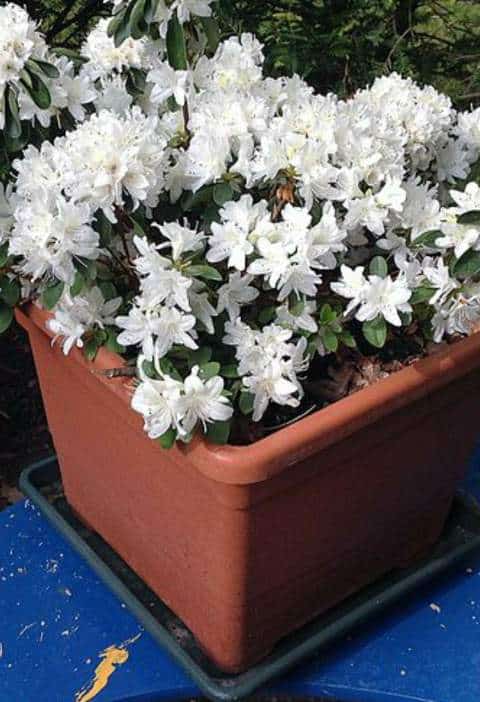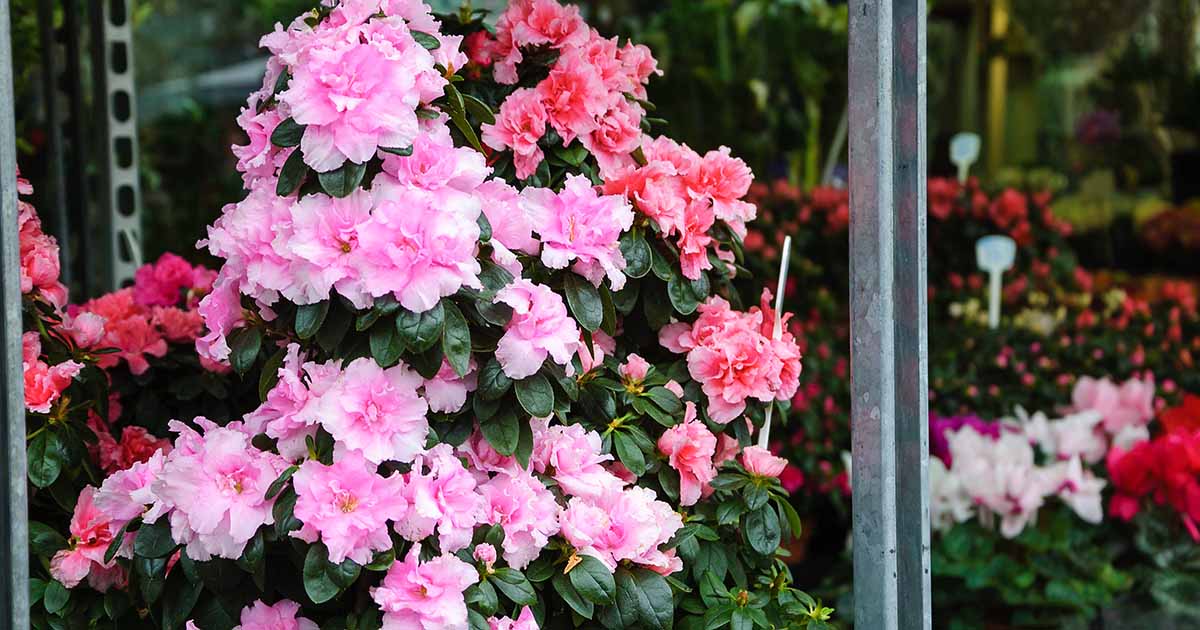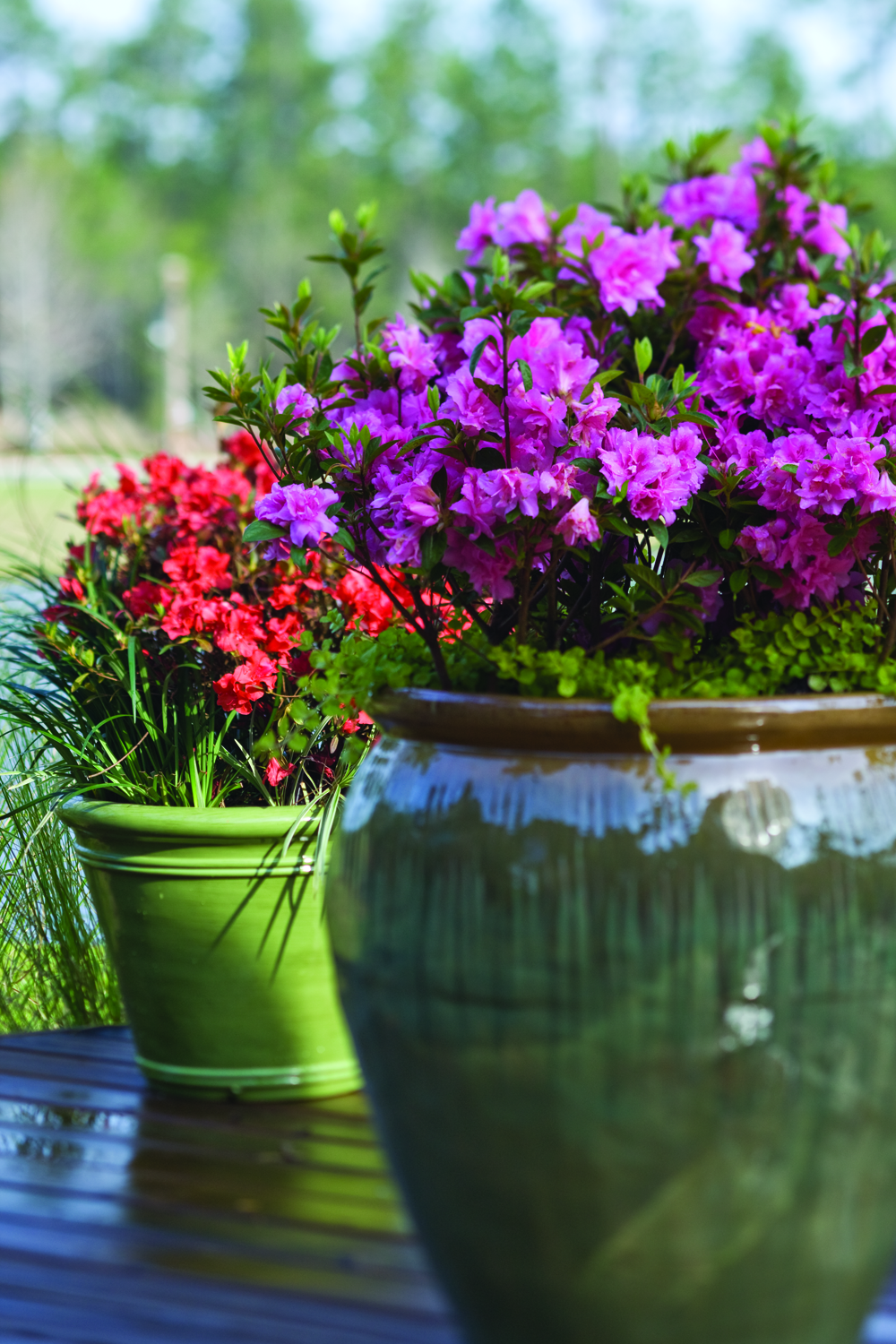All azaleas thrive in pots, but there are a few things to keep in mind when selecting the perfect container for your azaleas.
How effectively your azalea grows and blooms will vary depending on each factor.
In comparison to plastic or metal pots, clay, ceramic, or terracotta pots are the ideal for azaleas since they keep the roots cool during the summer. Azalea pots need drainage holes in the bottom that let water to drain. Pots with a 16-inch diameter are guaranteed to hold enough moisture and have enough soil to act as insulation.
Table of Contents
Good Drainage at the Base of the Pot or Container
The requirement for drainage holes in the base of a pot for azaleas is by far its most crucial feature. Otherwise, the roots would become soaked and the pot would gather water. Azaleas need wet soil, but soggy or saturated soil will quickly cause the fungus that causes root rot.
Before placing the soil and azalea in the pot, it’s a good idea to use a layer of gravel that is 1 inch thick at the bottom of the container. This will make it possible to keep the drainage holes free of any compacted soil or other objects that can obstruct the passage of excess water out the bottom of the pot.
Of course, choosing the proper potting mixture for azaleas is crucial to ensuring that the roots receive the ideal combination of wet and well-draining soil. For best practices, see my post on the best potting mix for azaleas.
It is a good idea to place the pot or container on “feet” that elevate it slightly off the ground if it will be used outside. When pots are placed on patios, water may occasionally run out the bottom and collect on the patio concrete, making the soil too soggy for azaleas.
The azalea will stay healthy and free of root rot (plyothera), one of the most prevalent azalea diseases, if the pot is raised off the ground. This will allow water to drain from the container effectively. Read my post on frequent issues with potted azaleas if your plant appears to be in distress.
Do not make this error!
Use of a drip tray underneath the pot to capture any water that trickles out the base when caring for potted plants—especially indoor pots—is a very common error.
With the same result as a pot without drainage holes, this will catch all the water that is draining out of the pot. As soon as the soil becomes saturated, root rot signs appear on the azalea.
To prevent water from leaking out of indoor pots and ruining furniture or landing on window sills, I advise moving your azalea either temporarily outside or into the sink for 30 minutes after watering. Read my article on how much and how often to water azaleas for more advice on watering.
Best Pot Size For Growing Azaleas
Therefore, a larger pot is ideal for outdoor azaleas because larger pots have more soil capacity. Since pots can dry out pretty quickly in any case, the more soil in a pot means the more moisture can be retained, lowering the chance of drought.
An azalea’s resistance to the worst of the winter weather can be increased by adding extra soil since it gives the roots greater protection from the cold and more access to nutrients.
In my experience, outdoor azaleas do best in pots that are at least 16 inches across. As a result, the azaleas’ thin roots have ample room to stretch out and have access to water and nutrients.
As long as they receive regular irrigation and a spring fertilizer application, azaleas don’t mind being slightly pot-bound. Azaleas in pots require fertilizer to maintain healthy foliage and a robust spring and summer bloom display. For more information on when and how to fertilize azaleas in pots and containers, read my post.
The size of the pot will ultimately limit the azalea’s root development and size. Azaleas can be grown in more modest containers indoors, where cold weather is less of an issue, especially if you are cultivating azaleas for bonsai (azaleas are a great choice of species for growing resilient bonsai trees).
Best Material for Potted Azaleas
Although certain materials are better than others, azaleas can be grown in pots and containers made of practically any material.
For growing azaleas and rhododendrons, I personally advise staying away from metal and plastic containers. Metal heats up quickly in the sun because it is a good heat conductor.
Warm soil is one of the circumstances that encourages illness, so if the pot gets too hot, this can accelerate soil evaporation, raise the likelihood of drought, and maybe increase the likelihood that the roots will acquire the fungal disease root rot.
As azaleas often need moist soil and cold roots and may be among the first plants in the garden to wilt due to drought, using metal pots may need you to water them more frequently in hotter weather.
As long as the pot has sufficient of drainage holes and the plastic is not too thin, it is frequently acceptable to grow azaleas in plastic pots since a thicker pot helps to keep the soil and roots cooler in hot weather. However, plastic has a tendency to be less permeable for azalea roots to breathe.
The ideal containers to plant azaleas in are always made of ceramic, terracotta, or clay. The short root system of the azaleas will be protected from drought and the sun’s increased soil heating by a thick clay pot. The roots of the azaleas are also better protected in the winter by a thicker pot.
Clay pots also have a tendency to be more permeable, which aids the azalea roots’ ability to breathe.
Wooden pots and containers are also effective since they keep moisture effectively. Clay, terracotta, or ceramic pots are a much better choice for growing azaleas because they don’t require the continually moist soil that would otherwise cause the wood to decay. As a result, you might need to replace the pot after a few years.
Key Learnings:
- Azaleas do best in pots that are 16 inches in diameter or larger. By doing this, the pot is guaranteed to have enough soil to act as insulation during the winter and to retain hydration for the weak roots.
- Clay, ceramic, or terracotta are the ideal materials for azalea pots since they don’t heat up as quickly in the sun as metal and plastic pots do, which dries out the soil and creates drought.
- The drainage hole in the base is the most crucial feature of a pot for azaleas because it prevents the soil from getting too wet. In order to ensure that excess water drains out the bottom of the pot effectively, a layer of gravel at the base of the pot will prevent compacted dirt from obstructing the drainage pores.
FAQ
Are azaleas shallow rooted plants?
Keep in mind that azaleas have shallow roots. The root ball will sink and settle too low if the hole is dug too deeply. You can plant your azaleas slightly above grade if your soil is clay (1 to 2 inches higher). Azaleas can occasionally be planted 6 inches higher and do very well.
How deep should azaleas pots be?
Azealia should not be planted in thin plastic pots or left in its original container. Make sure the container you choose for your azaleas is the right size. The pot should have sufficient drainage holes in the base and be at least two feet broad and deep. Root rot may result from poor drainage.
Do azaleas have large root systems?
Evergreen azaleas and large-leafed rhododendrons should be excavated with the largest root ball possible because they have shallow, fibrous root systems.
Do azaleas grow well in pots?
If you’re searching for a low-maintenance plant that produces masses of vibrant color and lovely leaves, azaleas are difficult to top. Evergreen cultivars give the garden year-round interest, while some deciduous forms produce stunning fall colors. Azaleas are perfect for container growing since they are neat and small.
Do azaleas need deep pots?
Remember that a small container will restrict development when you plant your azalea, and choose a container that has enough room for the roots to expand. Azaleas are susceptible to rotting in poorly drained soil, so make sure the container has at least one drainage hole.



